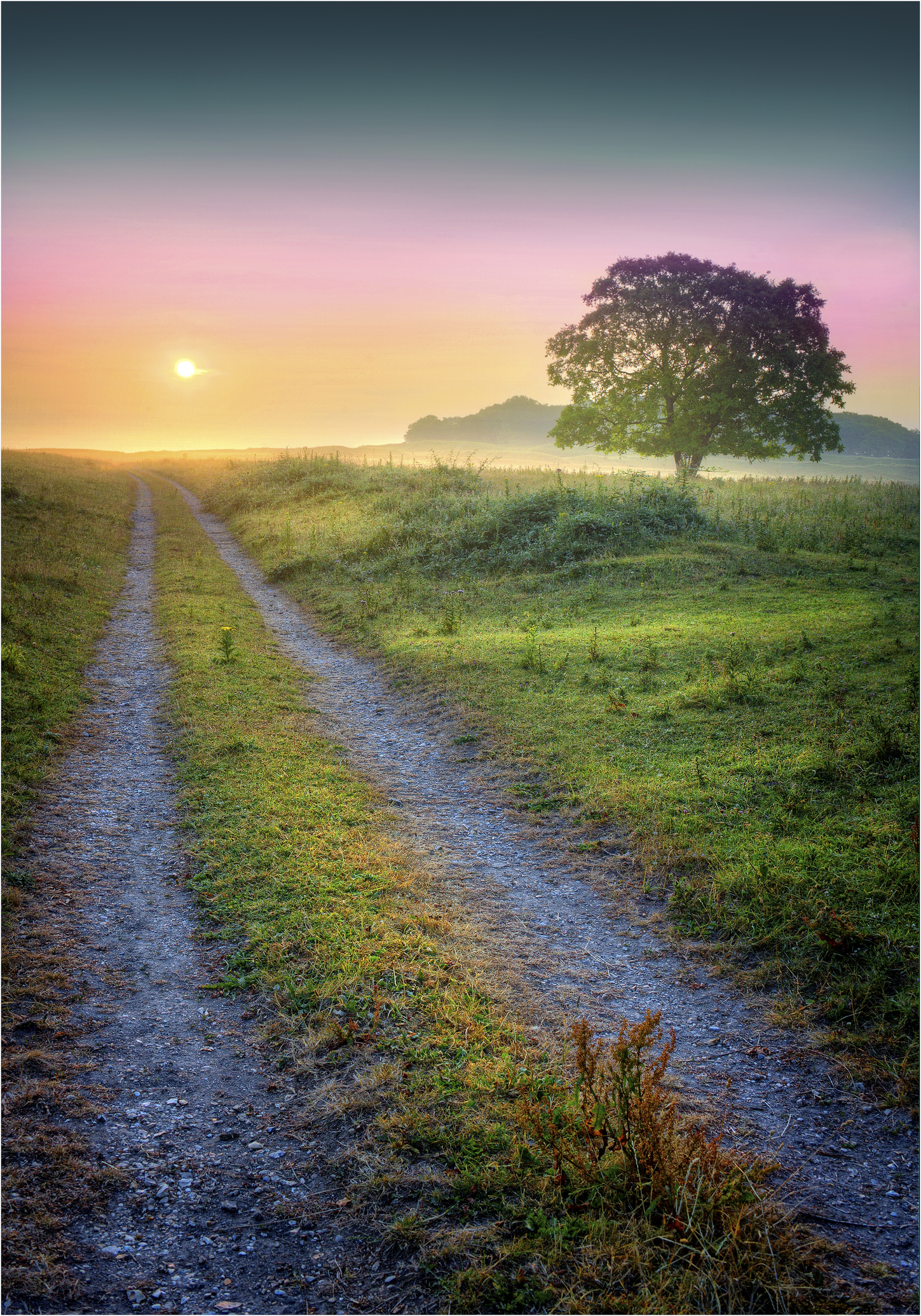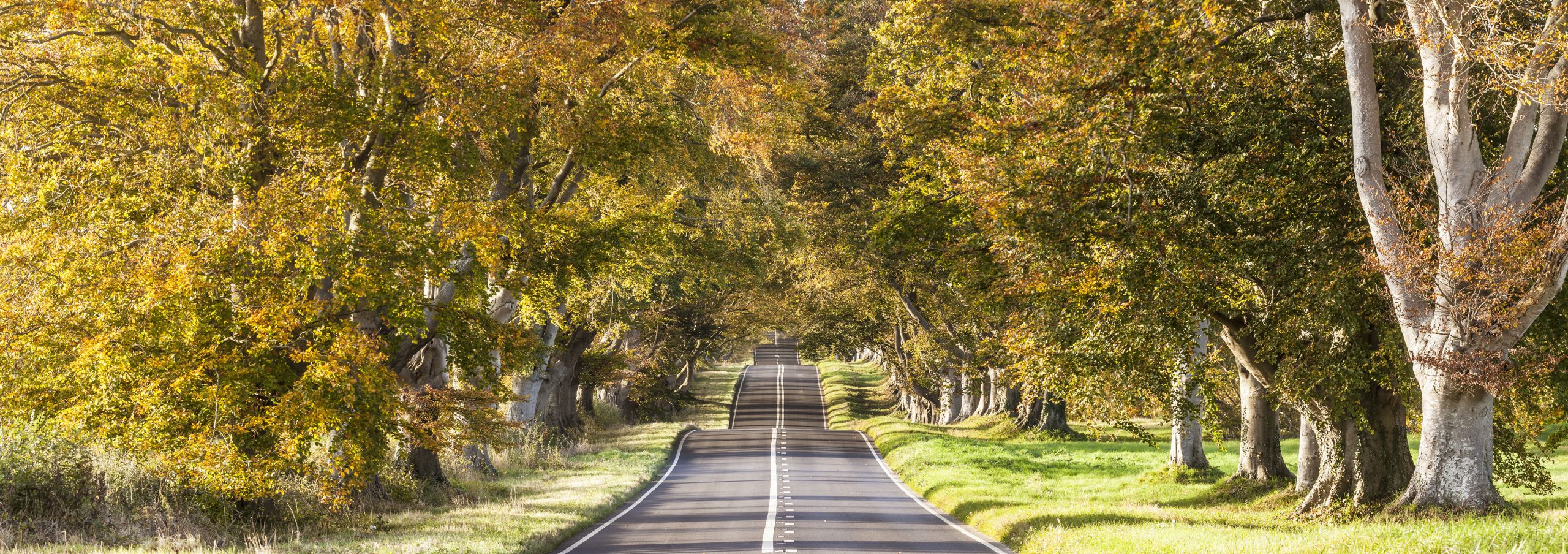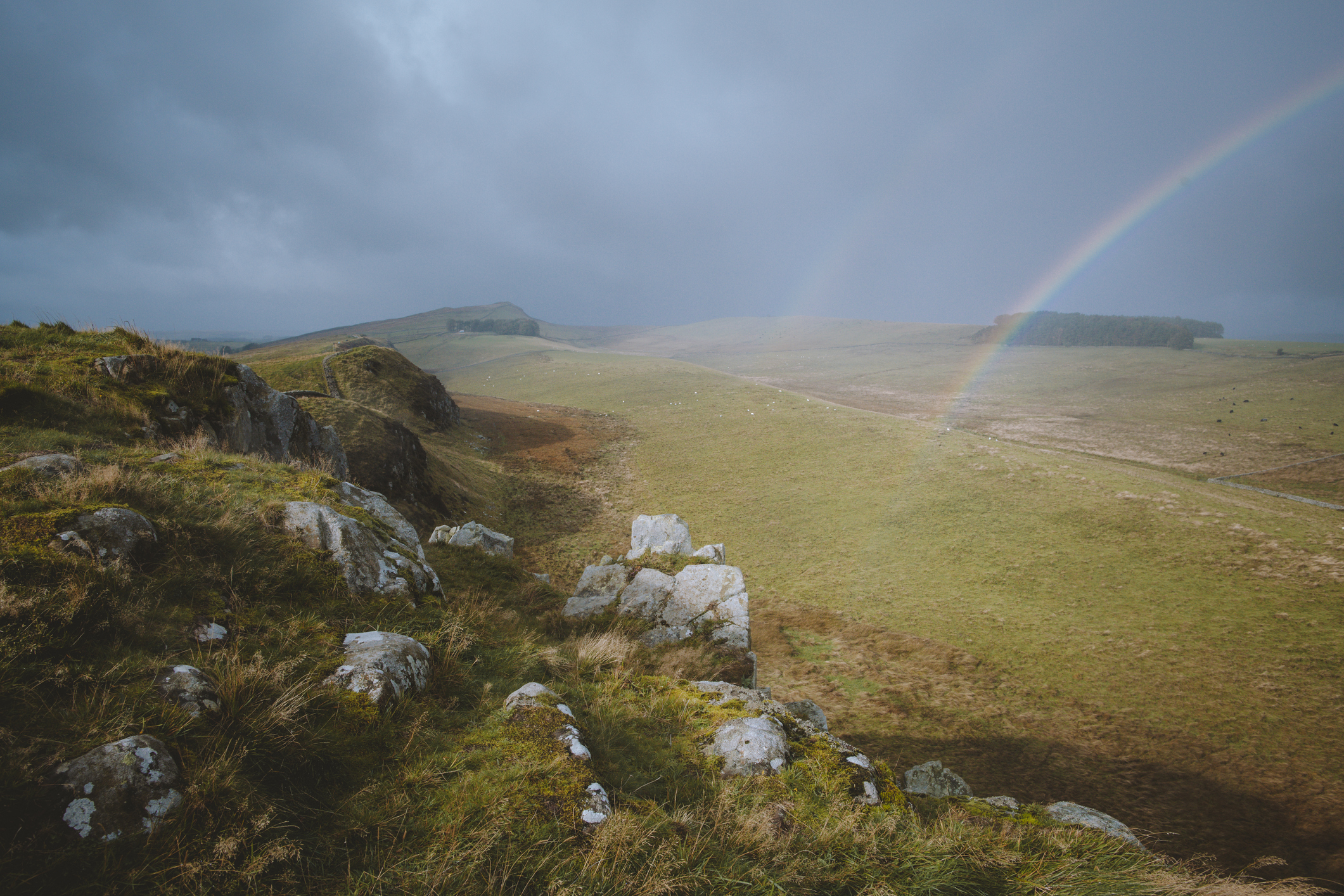A walk of wonder: The enduring beauty of the Kingston Lacy beech avenue
Fiona Reynolds takes a stroll around ancient Badbury Rings leads to Kingston Lacy, where an 188-year-old avenue of trees stands proud


It’s a still, golden afternoon: a treat in the aftermath of Storm Babet. The autumn sun has a crystal sharpness, highlighting the crunchy beech and hazel mast beneath my feet and the turning leaves, now yellow, now gold, now with a hint of red.
I’m walking to Badbury Rings from Hillbutts, near Wimborne Minster in Dorset. The first stretch is a long, straight path, part of the Hardy Way. Its poetic associations put me in the mood as I pass cottages with moss-laden thatched roofs seeming from another era. As I walk up the tree-lined paths — a remnant of the enclosure age — to reach King Down, I see the green mounds of carefully protected Bronze Age round barrows emerging from the crop, a reminder that this is, indeed, an ancient landscape.
I follow a zig-zag route around the down before I pick up the wide King Down Drove and walk towards King Down Farm. Here, in a hollow, is a glade with an old-fashioned finger post bathed in sunshine: a little bit of heaven. To my right is the farm, looking for all the world like Cold Comfort Farm with its ancient farmhouse and barns. Straight ahead is The Oaks, a 700-year-old copse of oaks, and to my left the path I follow to Badbury Rings, glowing in the afternoon light.

Badbury Rings is a huge Iron Age hill fort, in active use right through to Roman occupation (no fewer than five Roman roads form a junction on the north side). Its wooded heart is surrounded by three huge ditches, which I climb as I work my way to the centre.
Now the sun is lower in the sky, the steep gradients throw dramatic shadows and it’s not hard to believe the legend that this is the site of King Arthur’s last battle, after which he was turned by witchcraft into a raven. How curious, then, that this is where the last recorded pair of ravens lingered in Wessex.
I walk through the heart of the Rings, enjoying watching children playing on fallen tree trunks and racing up and down the ditches. It’s just the place for outdoor adventures. I leave the Rings, avoiding the car park, for one last treat. The Kingston Lacy beech avenue, 2½ miles long, is one of the tree wonders of England. Still mourning the loss of the Sycamore Gap tree, my heart beats faster to find this wonderful avenue standing proud.
It was planted in 1835 by William John Bankes, the inheritor of Kingston Lacy, one of the great houses of England. The avenue was a birthday gift to his mother, Frances, and he planted 365 trees on one side of the road and 366 (for a leap year) on the other.
Exquisite houses, the beauty of Nature, and how to get the most from your life, straight to your inbox.

When I was at the National Trust, which owns the estate, including Badbury Rings, we were concerned about the future of this avenue, which was showing signs of stress due to age and traffic. We began a gentle replacement programme, using hornbeam, and I’m glad to see this is continuing, offering the promise of a long life for the splendid avenue.
The late-afternoon light catches the trees with such beauty that I risk life and limb by walking close to the road to take pictures. It’s so busy I’m glad of the safe path the Trust has provided alongside. This ends, as does the avenue, at Lodge Farm, and I take the drove road back via King Down to my starting point. What a treat on a glorious autumn day.
Fiona Reynolds is the author of ‘The Fight for Beauty’ and chair of the Royal Agricultural University governing council

Walking the Llŷn Peninsula: A trip to the ends of the earth
Fiona Reynolds ticks off another extreme point of Britain with a trip to the end of the Llŷn Peninsula in

Credit: Getty Images/iStockphoto
Patrick Galbraith: 'And so I found myself totally naked, walking 12 miles with a bunch of IT consultants, retired teachers and a Frenchman in a little red hat'
Can you truly understand the countryside if you've not walked through it in the nude? Well, probably, but our columnist

Hadrian's Wall in an English summer: Wind, rain, and unforgettable beauty
Solitary daily pacing of Hadrian’s Wall, in the footsteps of Roman soldiers, brings back family memories for Fiona Reynolds.
Fiona Reynolds is chair of the Food, Farming and Countryside Commission, the former director-general of the National Trust, former Master of Emmanuel College, Cambridge, and the author of The Fight for Beauty. Follow her on Twitter @fionacreynolds.
